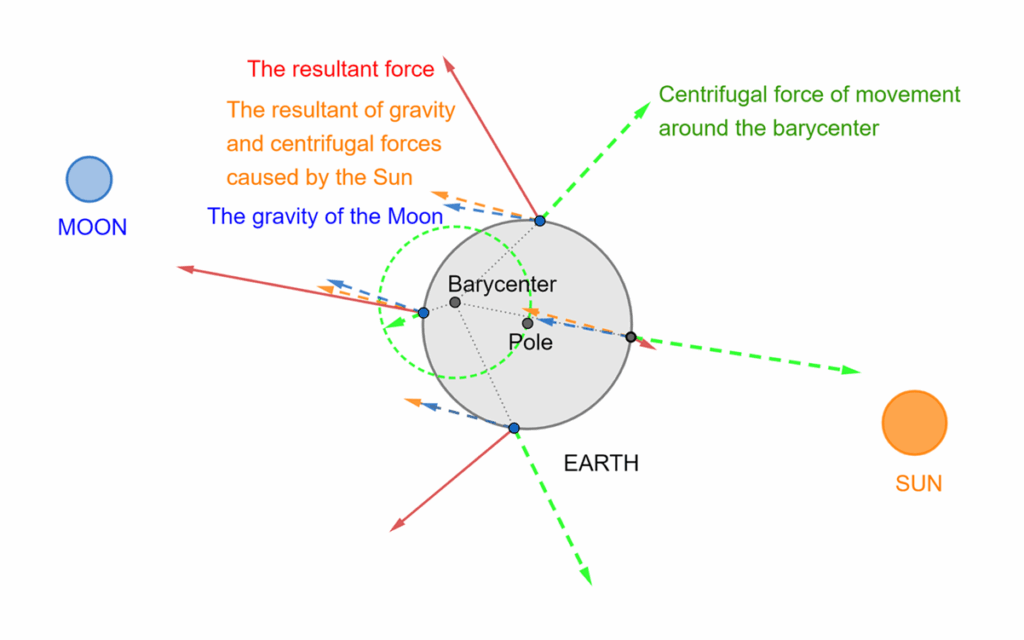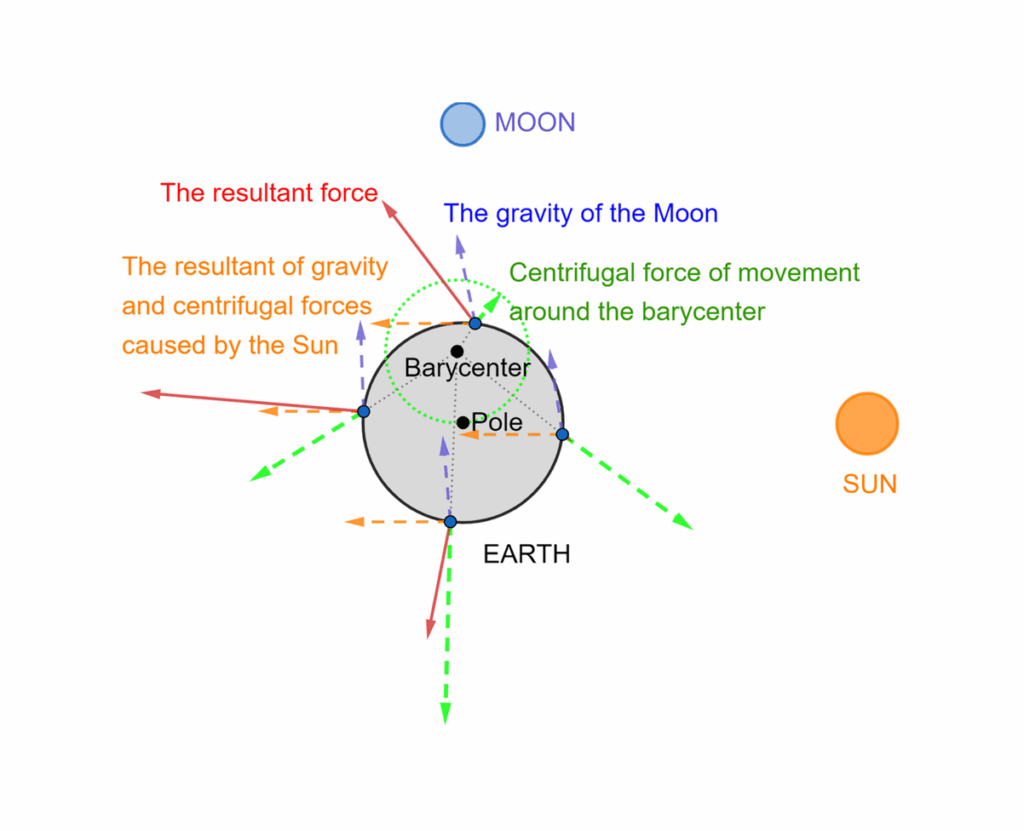It is a supplement to the book entitled „Unknown Earth – unknown hypotheses” (https://amzn.to/4dPba3s).


In Figure 5, which illustrates the forces acting during the full Moon, it can be observed that the maximum resultant force arises when the measurement station is positioned directly opposite the Moon — at this point, the gravitational force of the Moon is superimposed on the resultant of the forces associated with the Sun.
However, it turns out that when the Moon is in the first or last quarter, and its gravitational force is perpendicular to the forces associated with the Sun and therefore does not add to them, the resultant force remains very similar to the situation during the full Moon or the new Moon. Specifically, during the quarter phase, when the upward-directed gravitational pull of the Moon is absent because the Moon lies on the horizon, this role is taken over by the increased centrifugal force arising from the Earth’s revolution around the Earth–Moon barycenter; this is because the distance between the observation point on the ocean surface and the barycenter increases, with the barycenter always oriented toward the Moon. This enhanced centrifugal force can be seen in Figure 6 at the same location where, during the full Moon, the greatest resultant force appeared in Figure 5.
The force vectors for Figures 5 and 6 were taken from the RESULT sheet in the Excel file named wzor91-www4. In cell B2, station no. 96 was selected; the full Moon occurred on 12 November 2019 at 13:00 UTC, the 50% phase on 4 November 2019 at 12:00 UTC, and the new Moon on 28 October 2019 at 12:00 UTC.
Subsequent sets of vectors show the forces at this station during the Earth’s rotation, 6, 12, and 18 hours later.
The data were taken from the following columns of the sheet: the balance of gravitational and centrifugal forces related to the Sun – columns EI (no. 126), EJ (no. 127), EK (no. 128); the Moon’s gravitational force – columns CN (no. 79), CO (no. 80), CP (no. 81); the centrifugal force related to the Moon – columns CK (no. 76), CL (no. 77), CM (no. 78); the resultant force – columns EL (no. 129), EM (no. 130), EN (no. 131); the barycenter of the Earth–Moon system – columns CD (no. 69), CE (no. 70), CF (no. 71); the Moon’s position – columns ED (no. 121), EE (no. 122), EF (no. 123); the Sun’s position – columns EA (no. 118), EB (no. 119), EC (no. 120).